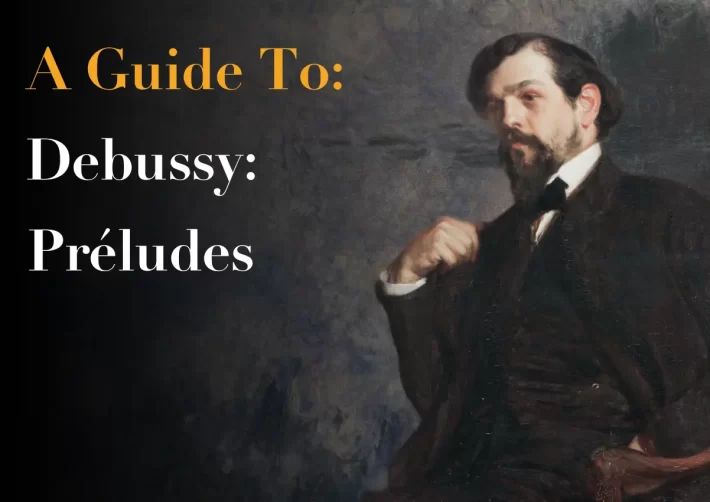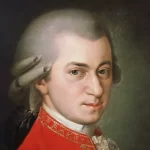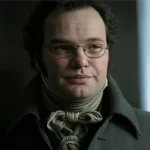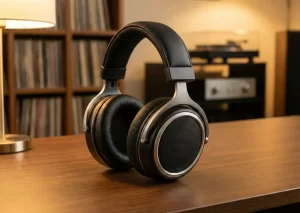The mid-19th century saw Western Europe at the height of Romanticism: as a literary and artistic movement, it underscored themes like subjectivity and individualism, imagination, and an exploration of the past (Dante’s Inferno was a popular revisit by composers like Liszt). Other quintessentially Romantic composers such as Brahms and Beethoven looked back to Classical forms and genres (i.e. sonatas, the string quartet) as the bases for their works, but expanded them considerably in breadth.
A movement’s influence, however, inevitably starts to fade with time; new and often antithetical ideas then take its place. Romanticism was certainly no exception: the end of the 19th century saw its exit and the emergence of a new era, Impressionism. Impressionism embraced ideas at the other end of the spectrum, seeking to create an objective perception of the outside world, of natural elements and scenery. The strong emotions associated with Romanticism were also replaced by a fascination with the ethereal, transcendent, and otherworldly.
Claude Debussy himself strongly disliked the term ‘Impressionism,’ so it comes as quite the irony that he is regarded as one of its greatest pioneers. Undeniable, however, is how his music remains some of the best in evoking this musical style. Piano works like Children’s Corner (1908) or Suite bergamasque (1890-1905) with its famous Claire de Lune remain favorites to this day.
But among his seminal compositions that represent the era’s true style are the Préludes. Twenty-four in total, they are split across two volumes but do not follow a consistently defined tonal relationship like Bach’s or Chopin’s do. Bucking this older trend, Debussy employed more unconventional harmonic patterns to create vivid vignettes of the physical and mystical worlds. In a fashion true to Impressionism, he places the descriptive titles at the conclusion rather than the start of each selection; this consequently gives listeners the freedom to form their own impression of the music.
Debussy – Préludes – Analysis
Book 1 (1909-1910)
By 1909, Debussy had already composed some of his defining works, including the enthusiastically-received tone poem, Prélude à l’après-midi d’un faune (1894). He had also heard and experienced music outside of the Western Classical tradition. A prelude that vividly reflects his diverse musical inspirations is Voiles (No. 2). Debussy may well have been going for a theme of ambiguity, down to the title itself: Voiles can be translated to either “sails” or “veils,” and the music undoubtedly fits either description. The recurring, rhythmically defined B-flat ostinato in the left hand reminds us of the gentle rocking of a boat, while the descending whole-tone pattern in the right hand evokes the floating of a gossamer veil in the wind. The whole-tone scale is in fact at the center of the entire work: altogether different from major/minor diatonicism, it puts listeners in a suspended and almost atmospheric state. Voiles also contains a nod to Debussy’s fascination with Indonesian gamelan, which he first encountered at the 1889 World Expo in Paris – a section is based on the Slendro (or pentatonic) scale, an integral aspect of this type of music.
Des pas sur la neige (Footsteps in the Snow, No. 6) shows Debussy’s unparalleled creativity in using harmonic colors. An omnipresent ostinato runs throughout as a representation, perhaps, of a barren, snow-covered land. Musically, a similar parallel exists: it is a ‘blank’ canvas upon which an array of harmonies are added at different points. These rich sonorities transform the scenery from desolate to ominous to poignant, all before returning to the original key of D minor.
One of the most technically impressive of this first volume is Ce qu’a vu le vent d’ouest (What the West Wind Saw, No. 7) – robust and at times aggressive, this prelude captures the wind’s fury with the sweeping arpeggios, dominant 7th chords, and perhaps surprisingly dense textures – not to mention the massive chords at the conclusion which maximize the instrument’s low register. However furious the character may be, Debussy’s signature innovative style remains present.
Book 2 (1912-1913)
The summer of 1910 saw the first meeting between Debussy and Igor Stravinsky at the Paris premiere of The Firebird; the two composers would keep up a cordial acquaintance that lasted until Debussy’s death in 1918. As much as Stravinsky looked up to Debussy (who was 20 years his senior), the two composers mutually influenced each other. The second book of Préludes seem indeed to reflect a degree of further experimentation. At the heart of the murky Brouillards (Fog, No. 1), for example, is the concept of polytonality: C major in the left hand meets D-flat in the right. We might recall Stravinsky’s famous “tritone” moment in the middle movement of Petroushka, which pits a C tonality against F#.
As in Book I, there are some highly programmatic works like the habanera-based Puerto del vino (The Wine Gate, No. 3) or virtuosic Feux d’artifice (Fireworks, No. 12), with its homage to the French national anthem, La Marseillaise, in the final moments. However, there seems to be something more esoteric and at times almost sinister in Book II as a whole, with certain selections serving as fascinating and abstract representations of events or people. La Terrasse des Audiences du Clair de Lune (The Terrace of the Audiences of Moonlight, No. 7), for instance, was inspired by a newspaper article about the coronation of King George V as Emperor of India. From the calm first chords emerges a chromatic descending line that, against the gong-like bass tones, helps create a panoramic soundscape. Debussy utilizes quite a bit of chordal parallel movement here (something that we also see in Feuilles Mortes N. 2 or Canope, No. 10) that magnifies the work’s suspense and, turning the tables on our expectations, casts an eerie if not funereal light on an event we might normally associate with pomp and circumstance.
Ondine (No. 8) finds its source in the mythical character that was also popular in literature and art – here, Hans Christian Andersen’s The Little Mermaid (1837) comes to mind. This prelude is interesting to look at, given that Debussy’s contemporary Maurice Ravel wrote his own version as part of his Gaspard de la Nuit trilogy. Ravel’s Ondine portrays the more dramatic side of the character through the scintillating flutter of the chordal accompaniments and later, the impressively turbulent arpeggios of crashing waves. We become aware of Ondine as both a creature of alluring beauty but also of awe-inspring power. Debussy takes a different angle: his ocean waves are a little gentler and the mermaid a little more playful, as one can hear in the leaping tone clusters at the beginning. That’s not to say that his Ondine is one-dimensional, though. The quick and nuanced changes between light and dark brings out the caprice central to the mermaid’s personality.
Debussy – Préludes – The Best Recordings
Debussy’s Piano Rolls (approx. 1913)
Included in these recordings are five preludes from Book I. The composer’s own performance of Danseuses de Delphes (Dancers of Delphi) reflects a dignified stateliness, with a surprising bit of power in the lower register playing. In Cathedral Engloutie, it is interesting to note how Debussy plays the section of half notes at exactly the same tempo as the previous quarter notes. The pacing is on the more brisk and metronomic side overall, but what’s not lost is a vivid and powerful representation of the grand cathedral as it surfaces.
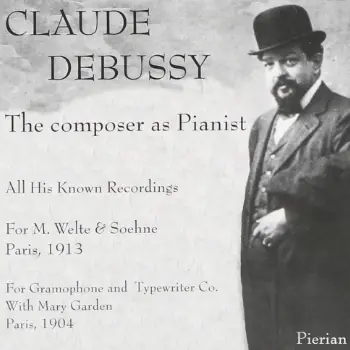
Walter Gieseking (1938-1939 / 1953-1954)
One should look no further than the masterful interpreter who recorded Debussy’s complete piano output. Gieseking recorded the Préludes three times over – in 1938/1939, 1950 (selections), and 1953/1954. The last recording sounds remarkably fresh for its age, but it is his first recording that is perhaps the best, if one compromises on the limitations of the late 1930s engineering. Ce qu’a vu le vent d’ouest might sound almost too fleeting at times musically, but when we imagine a sudden gust of wind, the interpretation suddenly seems quite real. La fille aux cheveux de lin provides a rare combination of what is simple, carefree, and yet incredibly musical.
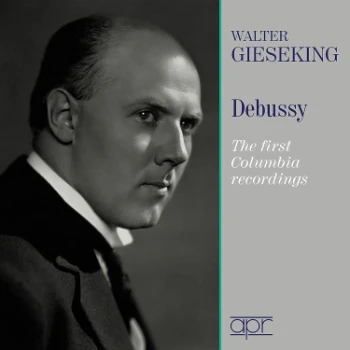

Vikingur Ólafsson
Many of the preludes hinge on a seamless blending of harmonies and tones much in the way we might see the soft brush strokes in an Impressionist painting. Vikingur Ólafsson presents the selected preludes with a deliberate clarity that might seem to diverge from the stylistic idiom. But the minimalism in Des pas sur la neige is exactly what embodies the true meaning of Impressionism: a way for listeners to appreciate all the subtleties of Debussy’s writing but to also let their own imagination run. Ondine captures just the right balance between the mermaid’s imaginative musings and the more suspenseful moments in which he showcases pristine articulation. With performances like these, we only wish he’d put out the entire set (read our original review of this album here).

Monique Haas
Monique Haas’ 1963 recording of the complete set is well worth a mention – one can hear various colors in her playing, even in more subtle preludes like Feuilles Mortes. Her Puerta del Vino has a fierceness that flares underneath a sense of coolness, making for an exciting listen.
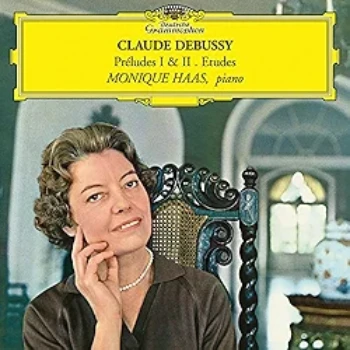
Arturo Benedetti Michelangeli
Arturo Benedetti Michelangeli also recorded the cycle in 1978; while his interpretation of works like Voiles might seem a bit unusually forward but memorable in its uniqueness. Les collines d’Anacapri, with its crisp rhythm and clarity of inner voices, evokes an exuberance that, while refined, makes for a most enjoyable listen.

Krystian Zimerman
Krystian Zimerman’s 1994 output is a recording that shows a rare level of finesse. Le Vent dans la Plaine and Les fées sont d’exquises danseuses are two selections that may not sound overtly difficult but that are actually so, due to the need for some extremely precise fingerwork and color changes. He handles these challenges with consummate musicianship in a breathtaking and effortless approach.
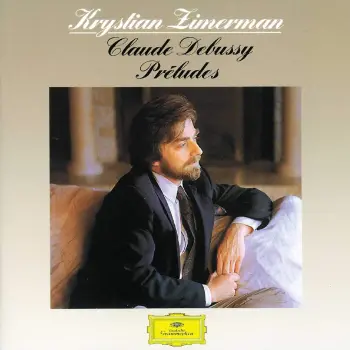
Jean-Yves Thibaudet
And finally, we cannot forget Jean-Yves Thibaudet, who has played the complete cycle multiple times in recital. His 1996 recording effectively takes each vignette out of its frame and transforms it into a real-life entity. His Le Vent dans la Plaine gives a little more personality to the wind with subtle bends and changes, whereas Zimerman’s goes for a more driven style. Thibaudet’s performance of Minstrels is a highlight – one bound to get a chuckle out of the listener, as he grasps the jovial humor perfectly.
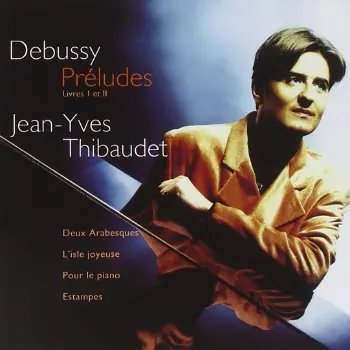
Support Us
We hope this guide has helped you navigate the wonderful world of classical music! If you enjoyed this free resource, consider making a donation to The Classic Review. Your generosity helps us keep the music playing by allowing us to publish informative guides, and insightful reviews. Every contribution, big or small, allows us to continue sharing our passion for classical music with readers like you.
Donate Here

